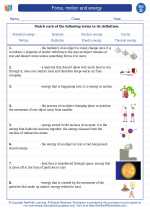States of Matter
Everything around us is made up of matter, which exists in three main states: solid, liquid, and gas. These states are determined by the arrangement and movement of the particles that make up the matter.
Solid
In a solid, particles are tightly packed and held together by strong forces. This arrangement gives solids a fixed shape and volume. The particles vibrate in place but do not move around each other freely.
Liquid
Liquids have particles that are close together but are not held in fixed positions. They can move past each other, allowing liquids to flow and take the shape of their container. Liquids have a fixed volume but not a fixed shape.
Gas
In a gas, particles are far apart and move freely at high speeds. This allows gases to expand to fill their container and take its shape. Gases do not have a fixed shape or volume.
Changes in States of Matter
Matter can change from one state to another with the addition or removal of energy. This process is called changing states or phase transitions. For example, when a solid is heated, it may melt and become a liquid. When the liquid is further heated, it may evaporate and become a gas.
Study Guide
- What are the three main states of matter?
- Describe the arrangement of particles in a solid.
- Explain the movement of particles in a liquid.
- How do particles behave in a gas?
- What is a phase transition?
- Provide an example of a phase transition.
Understanding the states of matter and their properties is essential in understanding the world around us. Take time to observe different materials and think about their states of matter and how they might change under different conditions.
.◂Science Worksheets and Study Guides Fourth Grade. Force, motion and energy
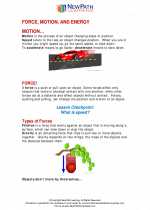
 Activity Lesson
Activity Lesson
 Worksheet/Answer key
Worksheet/Answer key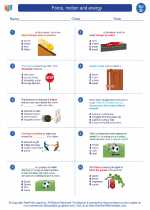
 Worksheet/Answer key
Worksheet/Answer key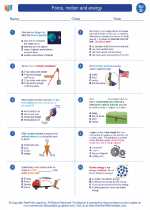
 Worksheet/Answer key
Worksheet/Answer key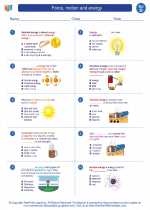
 Worksheet/Answer key
Worksheet/Answer key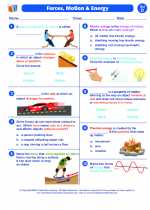
 Vocabulary/Answer key
Vocabulary/Answer key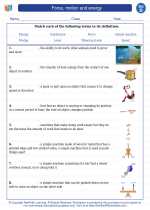
 Vocabulary/Answer key
Vocabulary/Answer key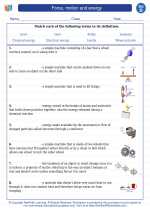
 Vocabulary/Answer key
Vocabulary/Answer key